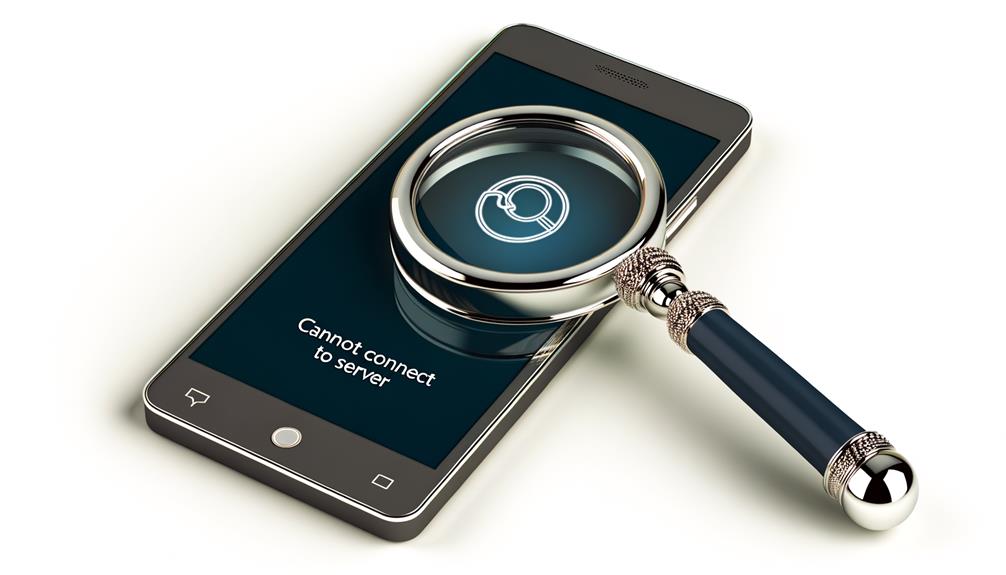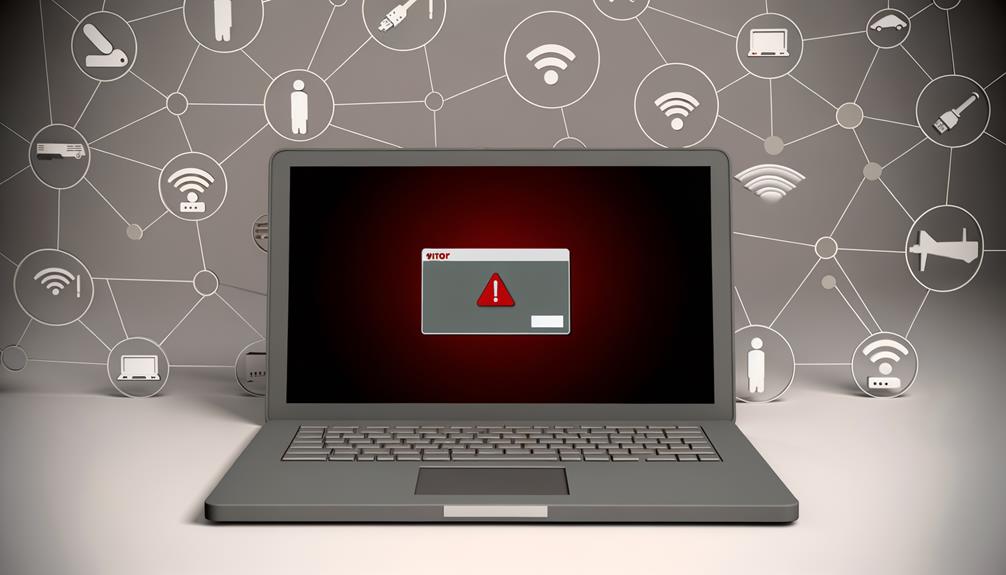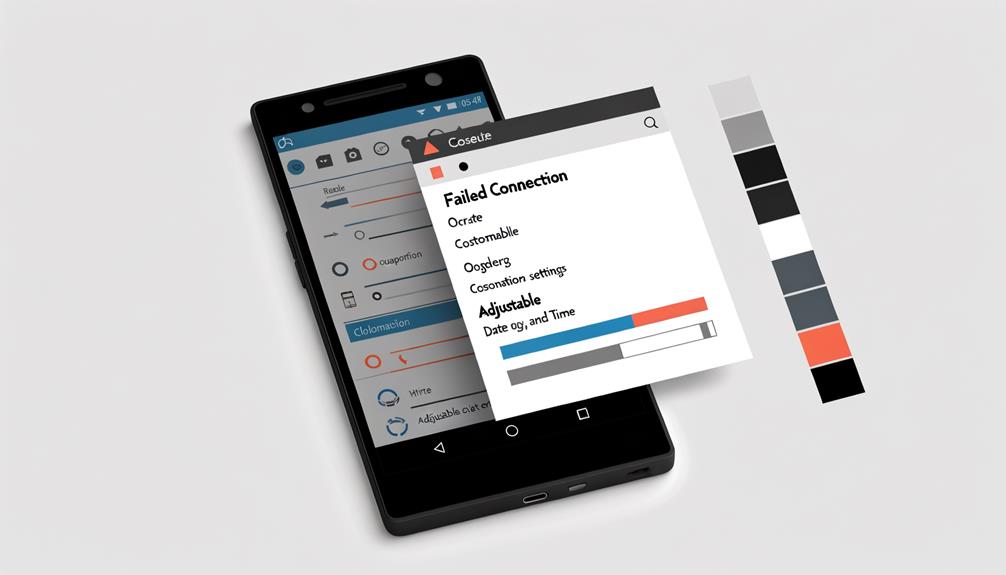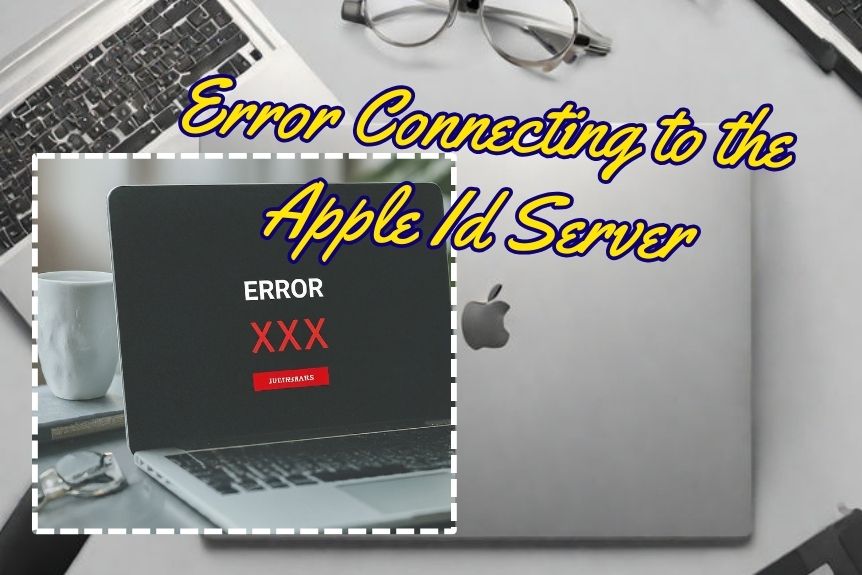When you see ‘There was an error connecting to the Apple ID Server’, it’s often due to inconsistent date and time settings, two-factor authentication issues, or network interruptions. You could try syncing your date and time settings, ensuring you’ve correctly entered your two-factor authentication codes, and checking your network stability and speed. It’s also worth visiting Apple’s System Status page to see if there are wider server connectivity issues. If you’re still having trouble, tinkering with your device’s operating system and VPN settings could help. More detailed troubleshooting advice awaits you as you proceed.
Understanding Apple ID Verification Errors

In the domain of Apple services, encountering an error connecting to the Apple ID server can disrupt your access to essential features like the App Store and iCloud, making it crucial to comprehend and troubleshoot these verification errors. Your Apple ID is the key to all Apple services, and a server error can prevent you from connecting to these services.
One common cause of such errors is inconsistent date and time settings across your Apple devices. If your devices don’t synchronize, they may fail to verify your identity, resulting in an Apple ID server connection error. Two-factor authentication, a security feature that uses a verification code to confirm your identity, can also be a source of this error if not properly configured.
To fix the error, start by checking the date and time settings on all your devices. Make sure they’re synchronized and set to automatic. If you’re using two-factor authentication, ensure you can receive and enter the verification code correctly. Keep in mind, Apple’s System Status page can be useful in identifying server connectivity issues.
Understanding these measures can help in resolving Apple ID server connection errors for seamless service access.
Checking Apples Server Status
Ever wondered how you can keep track of Apple’s server status to troubleshoot connectivity issues? There’s an efficient way to do it by visiting Apple’s System Status page. This page provides real-time reports on the operational status of various Apple services.
Monitoring Apple’s server status is not just a passive activity; it’s a proactive measure to identify the root cause of connectivity errors. Regular checks on the service status can help prevent prolonged disruptions in your service access. When Apple’s servers are operational, it clears the path to resolve issues.
To understand the status indicators, refer to the table below:
| Status Indicator | Meaning |
|---|---|
| Green Circle | Normal Service |
| Blue Circle | Recent Issues |
| Red Triangle | Service Problem |
This table simplifies the process of interpreting the server status. A green circle means all is well. If you see a blue circle, it indicates recent issues that have been resolved. A red triangle implies a problem with the service.
Testing Network and Wi-Fi Connection

To get to the bottom of Apple ID server connection issues, it’s important that you test your network and Wi-Fi connection, making sure they’re up to par. When experiencing an Apple ID server error, one of the first steps should be to check your internet connectivity. Erratic or weak WiFi connection can often be the culprit.
Use tools like Speedtest to analyze network quality, and guarantee it meets the required Mbps for best performance. This could help identify potential causes of the server connection errors. If you’re connecting to the internet through a public network, it’s advisable to switch to a private, stable WiFi connection. Public networks can often experience congestion, affecting your ability to connect seamlessly to the Apple servers.
Sometimes, disabling VPN can help resolve these errors, as VPNs can potentially conflict with your network settings. If your network condition is subpar, you could consider restarting your iPhone. A simple restart can sometimes rectify minor network glitches.
Lastly, don’t overlook your time settings. If your device’s time settings are incorrect, it could hinder the process of connecting to the server. Adjusting time settings can sometimes solve Apple ID server connection issues.
Apple ID Sign-In Troubleshooting
When you’re experiencing problems signing in to your Apple ID, it’s crucial to check your network’s stability and speed first, ensuring a steady connection. Network Settings play a vital role in connecting to the Apple ID server, so confirm they’re configured correctly.
If you’re still having trouble, it’s time to try some additional troubleshooting steps. Start by verifying Apple’s system status on their website. If there’s a reported issue affecting sign-in, you’re not alone; it’s a server error, and Apple is likely working on a fix.
Retesting after a device restart can often clear temporary ID errors. Make sure your device’s operating system is updated, as outdated software can cause sign-in issues. If you’re using a VPN, try turning it off; these connections can sometimes interfere with the Apple ID sign-in process.
Adjusting Date and Time Settings

While it’s easy to overlook, one simple but important step in resolving Apple ID server connection issues is adjusting your device’s Date and Time settings. Incorrect settings can result in the dreaded ‘Verification Failed‘ message when attempting Apple ID verification.
In your device’s System Settings, navigate to the Date & Time settings. Make sure the ‘Set Automatically‘ option is enabled so your device can synchronize with Apple servers for accurate timekeeping. This is critical for successful authentication with the Apple ID server. It’s a good idea to utilize the 24-Hour Time format to prevent confusion and ensure consistency.
If you’re still experiencing issues, try toggling the ‘Set Automatically’ option on and off, which can sometimes resolve synchronization hiccups. After adjusting these settings, restart your device to apply changes and potentially improve your WiFi connection to Apple servers.
